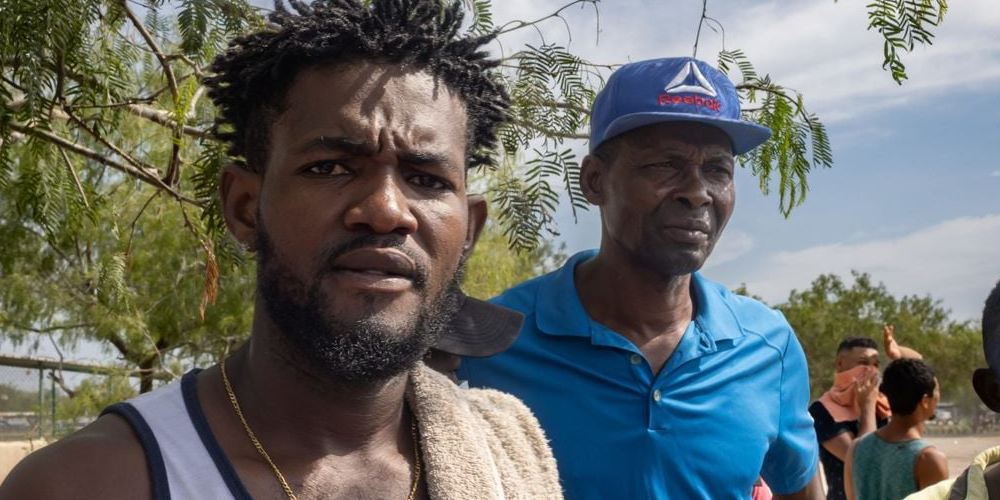(The Economic Collapse Blog)—Did you know that gangbangers in Chicago are extremely upset because a migrant gang from South America is starting to take over territory that once belonged to them? As you will see later in this article, law enforcement authorities in Chicago have completely lost control of the Windy City, and a major gang war could erupt at any time. But of course it isn’t just Chicago that has descended into a state of complete and utter chaos. In Los Angeles, a horde of approximately 50 young criminals ruthlessly looted a 7-Eleven on Friday evening…
A group of about 50 juveniles on bikes ransacked a 7-Eleven in Pico-Robertson on Friday evening, the latest in a string of recent robberies targeting the convenience chain, authorities said.
The group of juveniles, estimated to be between ages 12 and 15, entered the store at 8500 W. Olympic Blvd. around 7:25 p.m. and stole many items, according to a Los Angeles Police Department spokesperson. Most of the juveniles had fled the scene by the time officers arrived, he said.
The reason why this incident barely even made a blip in the news cycle is because this sort of thing now happens in Los Angeles on a regular basis…
The same store was targeted — also reportedly by a group of around 50 teens on bikes — on Aug. 9, according to Fox 11 Los Angeles.
A week later, a group of young men on bikes robbed two convenience stores, reported to be 7-Elevens, in Hollywood. And on Aug. 24, a similar ransacking unfolded at a 7-Eleven in San Pedro.
In the middle of the country, the streets of Indianapolis are constantly under siege.
In fact, it is being reported that police in the city recently had to “break up five different street takeovers in 48 hours”…
Police said they were met with violent crowds when they tried to break up five different street takeovers in 48 hours in Indianapolis.
Indianapolis was once such a quiet city.
But now everything has changed.
When Indianapolis police go out to break up these “street takeovers”, they are often viciously attacked…
IMPD says officers and Indiana State Police troopers were attacked and their cars were damaged while responding to several street racing and spinning events in Indianapolis over the weekend.
The first incident was reported around 2:30 a.m. Saturday, Sept. 14 near East Washington and Pine streets, just east of downtown Indianapolis. Officers conducting a traffic stop saw 100-200 cars “engaged in reckless driving,” including spinning, in a parking lot, the department said in a statement.
Chaos is even reigning in major cities in the Bible Belt.
This weekend, there was a horrifying mass shooting in Birmingham, Alabama that made headlines all over the nation…
At least four people were killed and dozens more were injured when gunfire broke out in Birmingham, Alabama. Investigators believe there were multiple shooters.
“We have dozens of gunshot victims from this area,’’ police spokesman Truman Fitzgerald told the Birmingham News. “I’m told at least four of those gunshot victims are life-threatening.”
The shooting happened in the city’s popular Five Points South entertainment district. At least 17 of the gunshot victims were seriously injured.
Needless to say, there has been chaos in our streets for a long time, but now things are going to an entirely new level.
Many are blaming the surge in migration that we have been witnessing while Joe Biden has been in the White House.
In Springfield, Ohio crime rates have absolutely skyrocketed during the past three years…
Reports of shoplifting and vehicle theft increased considerably in Springfield, Ohio, following the arrival of thousands of Haitian refugees, according to data obtained by the Daily Caller News Foundation through a records request.
The town, which had a population of 58,622 in 2020, has taken in between 12,000 and 20,000 Haitian refugees over the past three years, marking a population increase of between 20.4% and 34.1%. From 2021 to 2023, Springfield also saw a 51.5% jump in motor vehicle theft reports and a 112.8% spike in reports of shoplifting, data provided by the Springfield Police Division shows.
In Chicago, migration has been fueling the growth of criminal gangs, and gang members now outnumber the police by more than ten to one.
With numbers like that, there is no way that the police can maintain any sort of control.
A migrant gang from Venezuela known as Tren de Aragua is now steadily taking over territory that once belonged to local gangs, and members of those local gangs are furious because the migrants are getting far more government handouts than they are…
“There’s been a lot going on with (the migrant gangs) that nobody’s even hearing about,” Zacc Massie, 27, a street leader who first went to prison in 2015 and just recently got out.
“They be moving in our own territory and robbing people but they don’t get arrested like we do. I actually talked to one on the translator app. He told me all the things he got going on; how they helped him get a car, an apartment, (EBT) card, all this stuff. They giving them thousands, we get maybe $400 a month. And they don’t even have Social Security numbers!”
It is even being reported that teachers in Chicago elementary schools are being told to “give their migrant students a 70 percent in every subject and pass them on to the next grade” even if they don’t speak any English…
The teachers we spoke with work in CPS elementary schools and say they spoke no Spanish, while their migrant students spoke no English, making communication virtually impossible. They also added that because their schools were located in predominantly Black neighborhoods, they offered no English as a Second Language (ESL) support. Despite this, they say they were instructed by school administrators to give their migrant students a 70 percent in every subject and pass them on to the next grade.
Teachers say this was the case even if their migrant students displayed severe academic deficiencies.
The locals that have been suffering in deeply impoverished sections of Chicago for many years understand very clearly what is going on, and they are deeply frustrated.
Tensions in the city have never been higher, and one ex-gang member that has gone straight told the New York Post that it is just a matter of time before a gang war begins…
“When the black gangs here get fed up with the illegalities and criminal activities of these migrants or non-citizens, the city of Chicago is going to go up in flames and there will be nothing the National Guard or the government can do about it when the bloodshed hits the streets. It’ll be blacks against migrants.”
For a long time, we were warned that there would be chaos in the streets of America, and now it is here.
Law enforcement has already lost control of the streets in cities all over the country, and the violence, theft, drug dealing and sex trafficking only get worse with each passing day.
Meanwhile, millions of additional migrants come pouring into this nation illegally every single year.
Our politicians have created ideal conditions for widespread civil unrest, and once it fully erupts nobody is going to be able to control it.
Michael’s new book entitled “Why” is available in paperback and for the Kindle on Amazon.com, and you can subscribe to his Substack newsletter at michaeltsnyder.substack.com.
-
Learn the TRUTH about Gold IRAs and how most precious metals companies play dirty.



